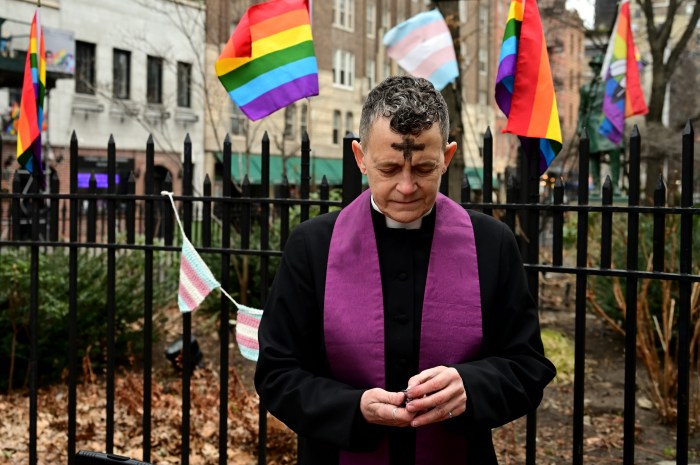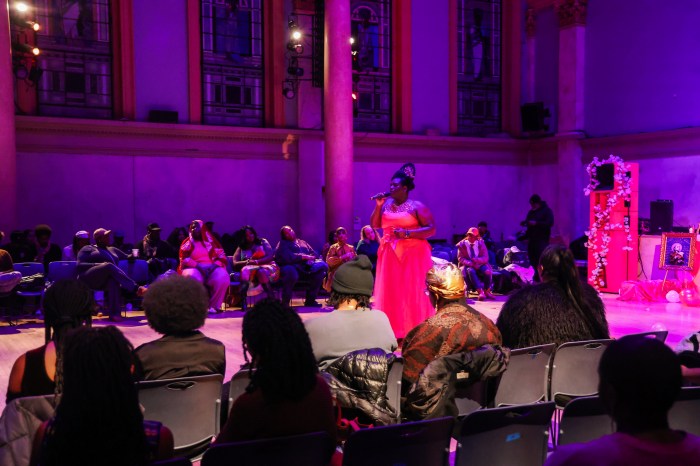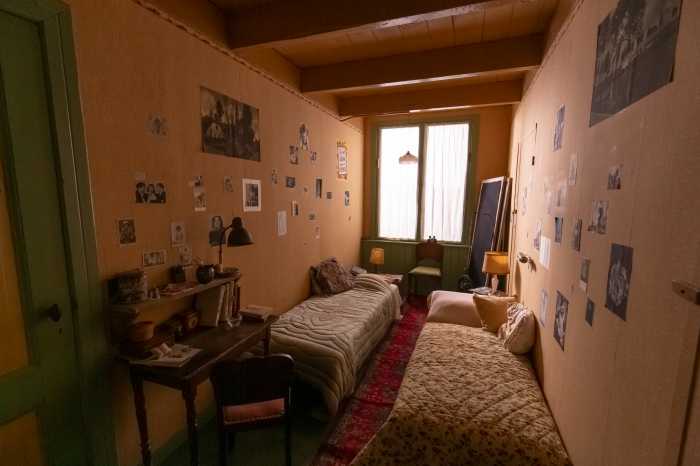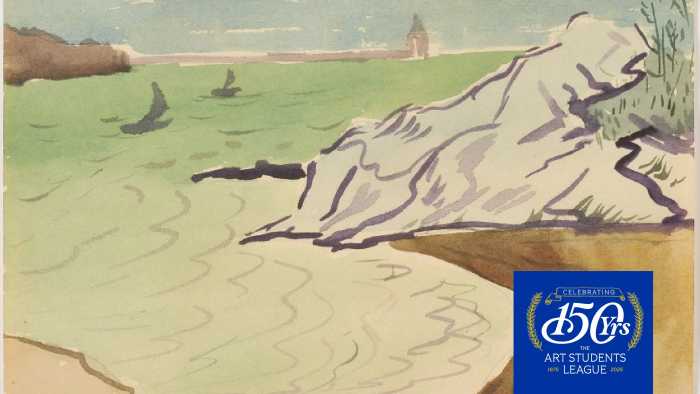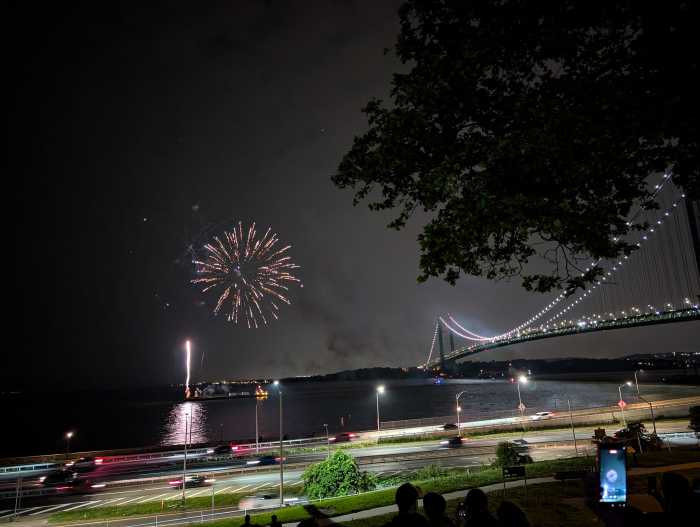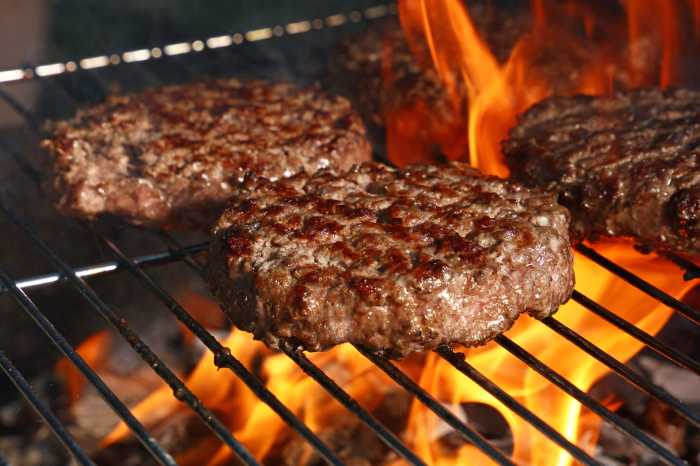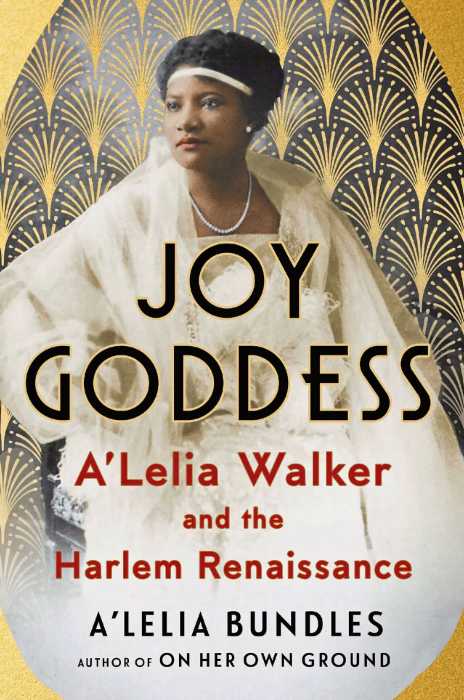The creative collective Pink Rooster Studio launched the semi-annual magazine The Tenth in April. | THETENTHZINE.COM
The Tenth, experimental, collectible, and, at $40 an issue, expensive, is a new publication in town that aims to show gay black men in a new light. The creative collective Pink Rooster Studio’s Andre Jones, Khary Septh, and Kyle Banks are the driving forces, working with more than 80 contributors — including fashion designers, photographers, writers, models, and others. The first issue of the semi-annual magazine (thetenthzine.com) was launched in April with a party here in New York. Gay City News corresponded via email with Septh about the new project.
MICHAEL LUONGO: Tell me more about the three of you at Pink Rooster behind the project.
KHARY SEPTH: Each of us has for some time now worked in the fashion, film, and music industries, so quite naturally with Pink Rooster, our creative studio based out of the Brooklyn Navy Yard, we often find ourselves paired with clientele from those worlds. Collectively, we’ve appeared on Broadway, at Sundance, and have shown at Mercedes Benz Fashion Week. By joining our talents, we are able to offer our clients, which range from Swarovski Crystal to Sony Music, a one-stop creative shop.
ML: What was the process for deciding to launch this magazine?
KS: We decided to do an investigation of ourselves as black gay men and bring together others like us to do work that reflects our personal interests, not our commercial interests. What might we create if there was no dollar sign attached to it? Could we build a stronger community and engage in sharing resources in the process? Those were the honest goals. We know and work with a lot of kids doing indie publishing here in the city. And the truth is the white boys have an army of resources at their disposal to create this work. We wanted to build our own army.
Collectible magazine celebrates cultural sway, rambunctious impatience of gay African-Americans
ML: What do you feel is missing in mainstream gay publications that The Tenth fulfills?
KS: Black gays as seen in mainstream media tend to fit into the tiniest, most compartmentalized boxes — the homo thug, the flamboyant queen — but are hardly ever seen/ written as fully realized human beings as most of us indeed are. There are one or two examples to the contrary as we must pay homage to trailblazers like RuPaul, but we can’t expect Ru to carry all the black boys on his back, and I’m more than sure he doesn’t want to.
We are indeed multi-dimensional, nuanced characters that take on many forms and faces, and although we’ve diverse talents and interests, we are all certainly linked through the shared experience of being black and gay.
What we’ve learned in the process of making this work is that it takes time, energy, and care to find each other, as so many of us are working in isolation feeling like the “only ones” in the room. But, if we can create a platform such as The Tenth, then we may perhaps be able to reach out and touch each other in a real way.
ML: How did you go about selecting the models, photographers, writers, and others who would contribute?
KS: We assorted a loose set of ideas and a small wish list of exceptional black men, some whom we knew personally as we are very much “in the know” here in New York, but most of whom we were not immediately connected to. We began reaching out and found a genuine interest in what we were trying to create, and the collaborators we initially worked with began referring us to other exceptional black gay boys and it took on a life of its own. By the close of it, we had over 80 contributors. And we know it’s not just about what’s happening on the coasts either.
For Volume One, we connected with brothers in Chicago and Seattle and New Orleans and Detroit and hope to continue to explore the diversity of our culture in different areas of the country to get a very real look into what’s happening now in our little black gay utopia.
Khary Septh explains that The Tenth found inspiration in Fire!!, a radical literary publication from the Harlem Renaissance. | THETENTHZINE
ML: Were there other magazines or books that were models for this? One might think of Kevin Sessums’ recent collectible 429 magazine.
KS: We actually credit Fire!! — the radical literary project by Langston Hughes, Richard Bruce Nugent, Wallace Thurman, and Zora Neale Hurston published during the Harlem Renaissance quite a bit in our conversations about The Tenth because it places our work in historical context. What we're doing isn't necessarily new; it's just of its time. In Volume One, we talk with art insider Sur Rodney Sur and creative director Derek Jackson, who published Hungzinepapers years back, and we’re actually collaborating now with the kids of BDGRMMR, which is also a zine of black queer origins.
Stylistically, we’re bedfellows with 429 and other glossy LGBT publications, but we’re a rather rambunctious, radical, and annoyed bunch ready to edge a little blackness into the larger conversation so we feel more aligned with those types of books.
ML: A striking aspect of this issue is the plantation photo spread and accompanying piece on homosexual love affairs between slave and master. Can you tell me more about their creation.
KS: With the Alice C Plantation, located deep in the swamps of Franklin, Louisiana as the backdrop, we found ourselves immediately transported back to a time when we would have ourselves been slaves and it was an eye-opener. We sometimes think of ourselves as so far removed from the painful history of slavery in America — as so modern, so fashionable, so enlightened, so educated — but the truth is that with the right styling and set location, it became crystal clear to us what our lots in life would have been during those times. It was your color that determined it, and being able to connect to and feel the energy of the ancestors was amazing. The vastness of that plantation, which at one time supplied cotton and tobacco for the much of the region, and the thought of the number of enslaved Africans it must have taken to keep that machine running were, for us, a true wow moment.
We also figured out that homosexuality was probably not as big of a deal as we might have thought, as the method of survival was surely priority number one. Homosexuality may just have been seen as “human nature” or “what you did,” but how could any attention have been paid to it, or judgments been passed, as we were all just trying to survive, to make it out of that awful place?
Courtney Harvier directed “I Saw Africa On His Mind” around the love scene which we shot in Master’s bedroom. How bold of us to fuck in Master’s Bed without inviting him to the party? Elfred Pinkard offered an academic perspective about Master’s relationship to his male slaves in a very powerful essay entitled “Love Among The Shadows.” We only ever consider Master and his forced relationships with the enslaved women during this time, but to explore the idea that Master also had eyes for the males that were subject to his rule was new for us. But the more we thought about it, why wouldn’t Master have been turned on by the striking faces, strong backs, sweaty brows, and bulging manhoods of the African men he enslaved.
Volume One features a spread set at the Alice C Plantation in Franklin, Louisiana. Tenth in April. | THETENTHZINE
ML: There are also voices from the African diaspora beyond African-American, like the story “Masisi” by Alex Breuggeman about being gay and Haitian.
KS: The experience of the black gay man is a global one. We are aware of the fact that although we may be afforded luxuries here in America — well, luxuries by the standards of the conditions many of our brothers are living under in most parts of the world — we are united in our goals for more access to education, capital, visibility, equal rights, and all of those other things that no man should be denied. If a gay kid in the Caribbean can’t come out because he believes the culture there won’t allow it, perhaps in reading Alex Breuggeman’s piece about being gay and Haitian, or Mateo Bijoux’s story about being gay from Jamaica and then coming to the States to make it, we can share some of this experience and do some good service.
ML: Tell me more about creating the Fuck White Boys layout – contrasting men you literally want to fuck and others you want to fuck off, like Paul Ryan, the KKK, and Elvis Presley?
KS: We’re gay. And more than anything, we appreciate men. Our tastes aren’t limited to any one flavor and, well, who the hell doesn’t want to fuck Jared Leto or Colby Keller?
What’s notable, however, is that as we were working on the piece, we knew we wanted to include out white boys, because we’re over the fetishizing of straight boys that so much of the mainstream gay media indulges in. And there was no shortage — Zachary Quinto, Cheyenne Jackson, Matt Bomer, Marc Jacobs, Neil Patrick Harris and his yummy BF.
Then we thought, “What if we had to do this same collage with out black boys?” Silence. So it’s the opposite side of the piece — the Paul Ryans, the Bill O’Reillys, the Kirk Camerons, the George Zimmermans — that represent institutional racism and homophobia that keep so many of our people marginalized and living in communities that don’t allow us to be out and proud.
White boys still have all of the power and options, and that’s going to have to change. But even though Elvis was a big ‘ol racist, we still would have fucked him in his “Hound Dog” days. He was a total hottie!




